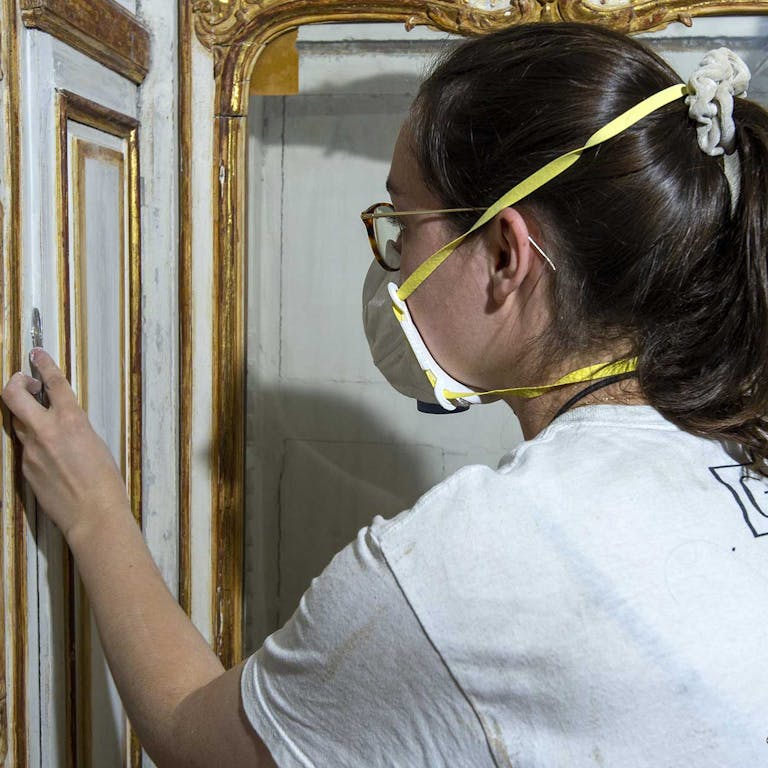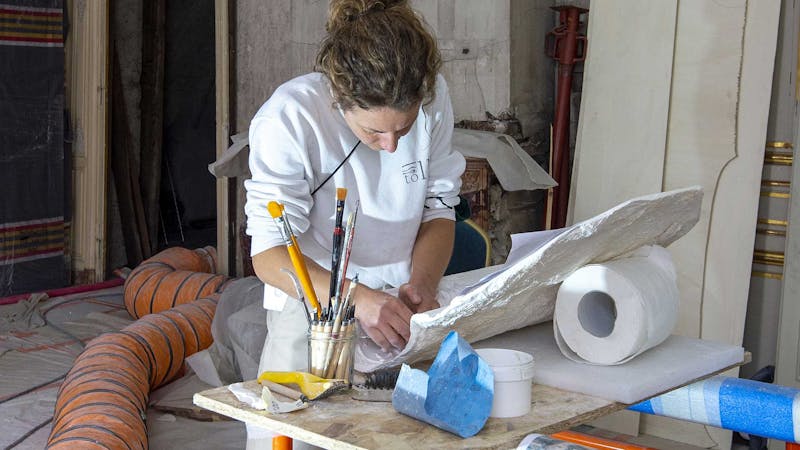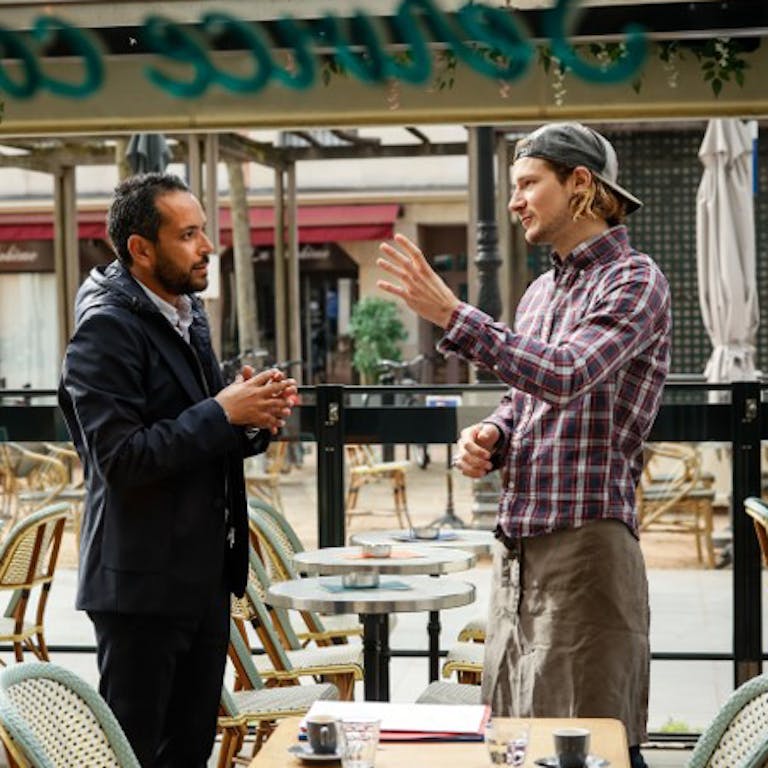
Journey to the heart of the Palace of Versailles
3 min
Madame du Barry's apartment is now undergoing a second restoration
As part of its partnership with the Palace of Versailles, AXA supports the restoration of Madame du Barry's apartment. Frédéric Didier, the restoration's chief architect, tells us about this large-scale project, which involves a variety of art professions and will continue until 2022.
A mythical place, the Palace of Versailles has never stopped evolving and transforming. What was once a seat of power before becoming a museum in the 19th century began as a simple hunting lodge. The Hall of Mirrors, the Grand Appartement du Roi, the Domaine de Trianon, and the gardens are the Palace's most famous landmarks. But did you know that princes of the royal family and holders of prestigious offices lived in the Palace? And that lesser courtiers were housed in the outbuildings?
The Countess du Barry, a favorite of King Louis XV, thus had access to her private apartment. After an initial restoration between 1943 and 1947, Madame du Barry's apartment is now undergoing a second restoration thanks to the support of the AXA Group.

Preserving, protecting and maintaining heritage: a necessity as well as a duty
Historical heritage sites are witnesses of the past. The representatives of the current generations are memory carriers. It is our duty to pass on what previous generations have left behind. Along with the monuments, many valuable craftsmanship skills should also be preserved.
It is this love of heritage that drives Frédéric Didier, chief architect of historical monuments, notably in charge of the castle and the city of Versailles. "I was drawn to heritage when I was a child, I was passionate about it". His dual training as an art historian and architect allowed him to follow his calling. Today, he is still fulfilled by this occupation, which gives him "the right balance between reflection on heritage and action". He adds, "we are here to save heritage [...] We have a dual role of preserving heritage and transmitting know-how [...] I am in direct contact with the real world".

The restoration of a gem under close supervision
The restoration of Madame du Barry's apartment began in February 2021 under the close supervision of Frédéric Didier. The master's eye is uncompromising when it comes to recovering the original aspect of a particular architectural element: "The worst sin for the architect is the sin of ignorance. Each construction site is a new investigation. You have to be on the lookout for the slightest clue as to why something is like this and not like that. It is necessary to find the authenticity, the historical and archeological richness and depth of the place that will then provide aesthetic pleasure".
With its fourteen rooms, and its surface of more than 350 square meters along with its unobstructed view on the marble courtyard for the reception rooms, the apartment of Madame du Barry is a testimony of 18th century art de vivre.

Art and crafts professions are mobilized
Far from being frozen in an era, monuments evolve with the times. Modern materials sometimes replace materials that were once used. Machines can occasionally replace certain gestures of the past or certain arduous tasks. However, the conservation, protection, and maintenance of heritage are always motivated by the concern of preserving the very essence of a monument, or in other words, what defines it intrinsically.
Not one but several professions are involved in the restoration of Madame du Barry's private apartment. Carpenters, painters, gilders, locksmiths, ironworkers, marble workers, and stucco workers: no less than fifty craftspeople are working in this apartment to restore it to its former glory. "France is fortunate to still have many high-quality arts and crafts professionals", says Frédéric Didier. This is largely due to the historical monuments department and State support". Nevertheless, the chief architect is keen to point out that there is "no sub-profession". Separating the art professions from other trades is out of the question. Each of them has its place and it is this complementarity that allows us to achieve exemplary restoration results.

See you in 2022...
The restoration of Madame du Barry's apartment will continue until June 2022. But until then, you can already discover the many other treasures that the Palace of Versailles has to offer.
AXA has a long-standing commitment to the protection and transmission of heritage, and for many years has supported symbolic places of French culture with international significance. At a time when cultural sites as a whole have been weakened by the drop in attendance due to the health crisis, it is all the more necessary to act and get involved.



